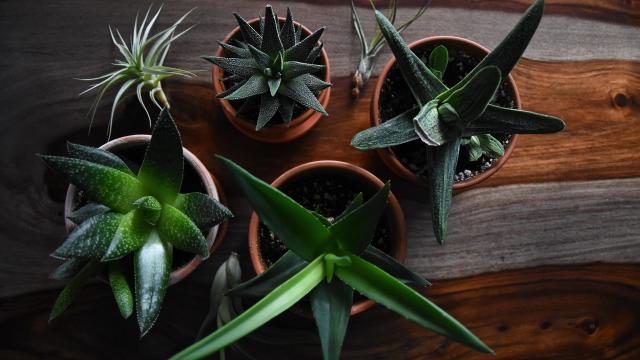Pretty much everything about moving is hard and annoying and makes you swear that you’ll never move again. But moving with a large collection of (or even a few) houseplants is even trickier. You want to make sure they survive the trip, that their pots don’t break, and that the soil doesn’t spill everywhere and get the rest of your stuff dirty.
Fortunately, in an article for mindbodygreen, professional plant stylist Hilton Carter shares a few tips for successfully moving your houseplants, keeping them intact in the process. Here’s what to know.
Before the move
Taking a few steps ahead of when you start moving — and even packing — can save you a lot of hassle on the day of the big move. Here are two of Carter’s suggestions:
Make sure the soil is dry
Yes, plants need water to live, but also, moving plants with recently watered soil is harder to do because they are heavier to move. Here’s Carter’s tip:
This means that if you plan to move a week from now, it’s best to let the soil start to dry out so that the plant and pot are much lighter and easier to transport…If you’re dealing with a plant that needs to be watered more often, try putting a water spike in the soil and placing a bottle filled with water on top. That will help keep your soil moist without it becoming too wet and heavy.
Use the plants’ nursery pots
According to Carter, leaving your plant in the plastic nursery pot it came in is totally fine, as long as the roots aren’t growing out of the bottom. Transporting them in their nursery pots — separate from their heavy planters or pots — could make the job a little easier.
How to pack your plants
Now that it’s time to pack, taking a little bit of extra time to do it carefully could save you a lot of time (and hassle) when you get to your new place.
Cover the pot and plant
If your plant lives in a breakable pot (without a nursery planter), Carter recommends using packaging material to wrap it up, so it stays safe in transit. Now it’s time for the top part of the plant. Per Carter:
Take a plastic bag or sheet and tightly wrap that around the top of the pot, taping it down to make sure none of the soil spills out. Just make sure you don’t cover the drainage holes. You want to make sure the roots can still breathe.
Tie up the branches of larger plants
To make it easier to get in and out of moving trucks and doorways, Carter suggests tying up branches of your larger plants:
The best way not to break off one of their limbs is to gently pull them inward. To do this, use gardening Velcro or string to slowly bring the branches or stems together, and tie them up. This will force the branches and stems to go more in the up direction than out.
Wrap up the plant
Finally, Carter says that it’s best to wrap up the top of the plant to protect it during the move:
Using kraft paper, pull off a piece that’s long enough to wrap around your plant. Once you have it around all of the foliage, use tape to secure it. This also helps when you’re moving during the colder months of the year. It’ll help protect the foliage from frostbite.
Apparently, there are also dedicated plant-moving services, but that sounds expensive, and not exactly a hack.

Leave a Reply
You must be logged in to post a comment.